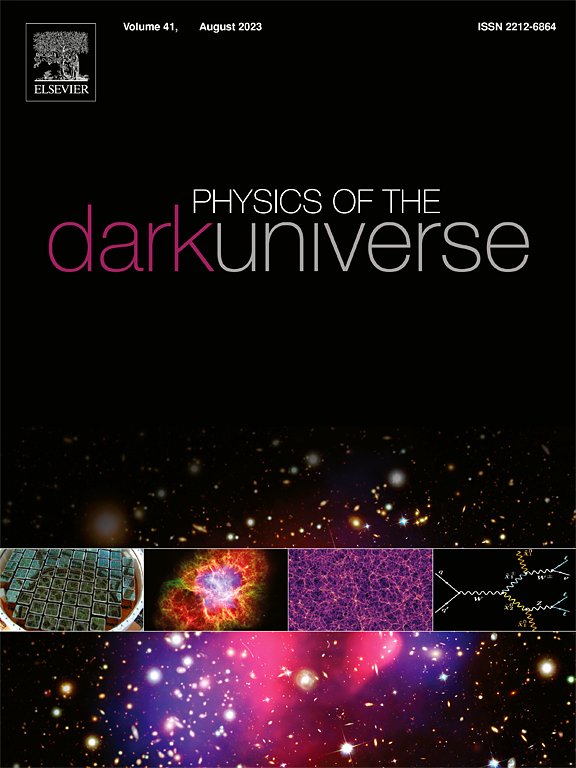Periodic orbits and their gravitational wave radiations around the Schwarzschild-MOG black hole
IF 5
2区 物理与天体物理
Q1 ASTRONOMY & ASTROPHYSICS
引用次数: 0
Abstract
This article explores the motion of massive particles in the gravitational field of a modified gravity (MOG) black hole (BH), characterized by the parameter . Using the Hamiltonian formalism, the geodesic equations and the effective potential governing particle trajectories are derived. Key features, including the innermost stable circular orbit (ISCO) and the innermost bound circular orbit (IBCO), are analyzed, revealing their dependence on the particle’s energy, angular momentum, and the MOG parameter. In the extremal case, where , the event horizon merges with the Cauchy horizon, forming a distinctive BH configuration. Numerical methods are employed to compute periodic orbits in this spacetime, with a comparison drawn to the Schwarzschild BH. The findings indicate that for , periodic orbits around Schwarzschild-MOG BH exhibit lower energy requirements than those in Schwarzschild spacetime, whereas for , the energy requirements are higher. Precessing orbits near periodic trajectories are also examined, offering insights into their complex dynamical behavior. Finally, the gravitational wave (GW) radiation from the periodic orbits of a test particle around the Schwarzschild-MOG BH is examined, generating intricate waveforms that provide insights into the gravitational structure of the system.
求助全文
约1分钟内获得全文
求助全文
来源期刊

Physics of the Dark Universe
ASTRONOMY & ASTROPHYSICS-
CiteScore
9.60
自引率
7.30%
发文量
118
审稿时长
61 days
期刊介绍:
Physics of the Dark Universe is an innovative online-only journal that offers rapid publication of peer-reviewed, original research articles considered of high scientific impact.
The journal is focused on the understanding of Dark Matter, Dark Energy, Early Universe, gravitational waves and neutrinos, covering all theoretical, experimental and phenomenological aspects.
 求助内容:
求助内容: 应助结果提醒方式:
应助结果提醒方式:


